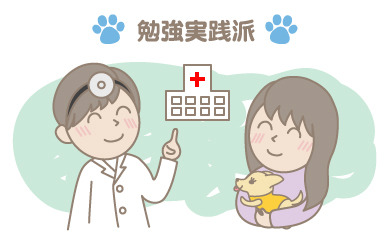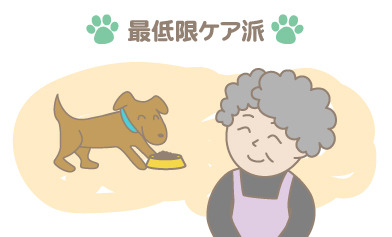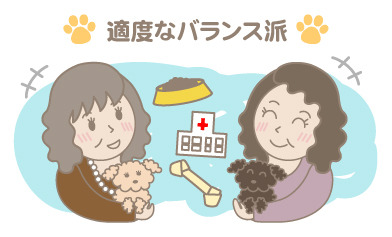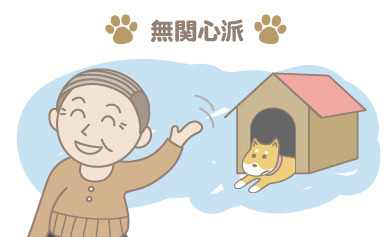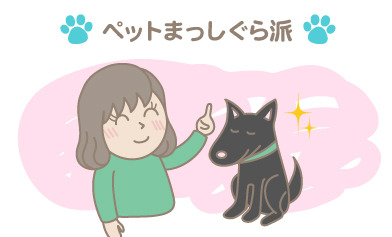Following up from last time, we'd like to introduce owner clusters based on the latest pet owner survey conducted this past March.
As before, six distinct clusters emerged. However, compared to the previous clusters—① Intimate, ② My Pace, ③ Fashionable, ④ Strict, ⑤ Guard Dog, and ⑥ Laissez-Faire—some shifts in overall trends were observed.
Partly due to changing the target area from nationwide to 1 metropolis, 2 prefectures, and 5 prefectures (Tokyo, Osaka, Kyoto, Chiba, Saitama, Kanagawa, Hyogo, Nara), clusters that were relatively distinct in the previous survey now showed tendencies that could be seen as combinations of the previous clusters.
Another notable trend is the emergence of a segment showing interest in social issues surrounding pets, a group that was less apparent in the previous survey.
Below are the details of the new pet owner clusters.
① Study & Practice Group
Owners who actively acquire knowledge about pets and put that knowledge into practice.
They have a broad understanding of information across various fields, from pet care methods to training and diet.
They view their pets as partners, spend the most on veterinary care compared to other clusters, and trust veterinarians and animal hospitals as information sources. They share many characteristics with the "Strict Group" from the previous survey, particularly in acting based on their own research. However, the Learning and Practice Group differs in that their primary information source is clearly veterinarians and animal hospitals.
They also spend the most on pet-related leisure activities, indicating they actively take their pets out. Compared to other clusters, they also show a stronger tendency to have had pet-raising experience in childhood.
② Beauty and Health Focused
This group consists mostly of owners with relatively high annual incomes who are highly conscious about their pets' food, clothing, and grooming/care.
They spend more on pet food than the average across all clusters, showing a discerning approach to food selection.
They tend to place relatively high importance on information from manufacturers' websites as a source, while also utilizing review sites. They own the largest amount of pet clothing and accessories.
While similar in elements to the previous "Fashion-Conscious" cluster, the notable difference is their added focus on food.
③ Minimal Care Group
These owners are not indifferent, but they handle everything at the bare minimum.
While they are not entirely indifferent to expenses like medical costs, grooming, and care, they tend to keep spending to a minimum. A prominent reason for getting a pet is "because someone else in the family wanted one."
This cluster can be seen as a combination of the previous "hands-off" and "guard dog" clusters.
This cluster does provide solid minimum care, exhibiting characteristics like carefully matching the dog's age to the appropriate food age range.
④ Moderate Balance Group
Owners who approach pet care without a strong bias toward any specific area, such as health or grooming.
This group is relatively large among those with average annual incomes of ¥10-15 million and is frequently seen among the affluent. They tend to spend relatively more on pet toys.
They tend to value acquaintances and pet shops as information sources, showing a strong preference for face-to-face communication and obtaining information from actual people. This cluster, which was not prominent in the previous survey, retains relatively strong elements of both the "Strict Group" and the "Intimate Group," yet maintains a sense of balance.
⑤ The Indifferent Group
As the name suggests, these owners show little interest and rarely take concrete action.
Not only is their awareness relatively low, but they also have the lowest spending.
Looking at household income, owners earning less than 3 million yen form the largest segment among all six clusters, which likely influences this group.
This cluster can be seen as similar in tendency to the "Minimum Care Group." Like the Minimum Care Group, it can be considered a layer formed by the combination of the previous clusters' "Laissez-Faire Group" and "Guard Dog Group." However, the Laissez-Faire element is particularly strong here, making this a group that is quite passive in their actions toward their pets.
⑥ Pet-First Group
These owners have a high level of awareness about pets, showing strong enthusiasm for going out together and interest in pet protection activities. Their insurance-related expenses are also the highest among the six clusters.
They rarely dress their pets in clothing and possess a strong awareness of various social issues related to pets. While relatively close to the previous "Intimate" cluster, this is the first time a cluster with such a pronounced awareness of protection has emerged, making it a distinctive cluster in this survey.
Thus, the survey results show more changes reflecting an overall improvement in pet owners' knowledge and mindset than significant shifts.
As in the previous survey, the analysis of both dog breeds and pet owners is based on trends, and we have again classified them into six types.
Did you find any that fit your situation?
We believe it would be truly wonderful if people could live with pets in a way that fits their lifestyle.
Even though we use the term "pet owner," it doesn't fully capture the reality. The Think Pet Project will continue to explore this complex reality.


